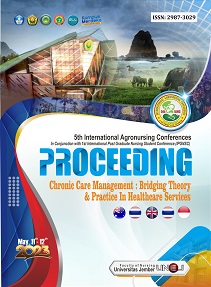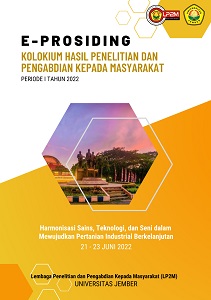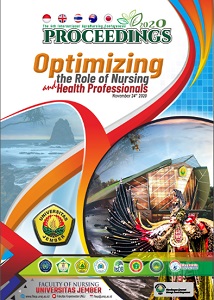EFFECT OF PARTICLE SIZE AND SURFACE CHARGE ON THE UPTAKE AND IMMUNE RESPONSE OF OVALBUMIN-ALGINATE MICROSPHERES
Abstract
Microspheres as one of drug and protein deliverysystem have some advantages such as producing
small particles; protect extreme conditions and
other benefits. Microspheres as one of
particulate systems have benefits in vaccine
delivery systems for enhancing immune response
through several mechanisms. As vaccine delivery
system, the particles can through phagocytosis
deliver antigens to Antigen Presenting Cells (APC)
(Foged et al, 2005). Particulate antigens might
mediate the induction of both humoral and
cellular immunity.
The particle size, surface charge and
physicochemical properties are factors that affect
the uptake of particles from the gut. Zeta
potential may also influence the drug release
profiles, stability and physicochemical properties.
Microparticles or nanoparticle surface is a very
important consideration in drug delivery ystem,
especially in targeting drug delivery. Surface
modification of micro/nano-drug delivery systems
is the most common strategy to controlling the
opsonization process and thus sustains the
systems for longer period in the blood stream.
Zeta potential is one of important properties
which contribute to the effectiveness. Zeta
potential can be defined as the electrokinetic
value associating a realistic magnitude of surface
charge and its unit is usually millivolt.
There are some investigations that showed that
the surface charge of nano/microparticles has an
effect on the stimulation of the immune
response. Some studies showed that antigen
loaded cationically charged particles could be
beneficial for gut up take (Honary S and Zahir F,
2013).
Peyer's patches (PP) is the main target of oral
delivery systems in the small intestine as a place
for the transport of pathogens to the lymphoid
tissue. This function is carried out by M-cells
which are located between epithelial cells,
bringing antigens and microparticles measuring
less than 10 μm (Lubben et al, 2001).
This study used alginate microspheres contain
safe and biodegradable polymer and CaCl2 non
toxic crosslinking agent produced by gelation
ionotropic technique by aerosolisation. This
technique had the advantage of spherical shape,
smooth with a small particle size that meets the
requirements of particle size for oral delivery
systems (Hariyadi et al, 2014). Maltodextrin
lyoprotectant were found to stabilize
microspheres (Hariyadi et al, 2015). Ovalbumin
was used as model antigen.
The hemagglutination assay was used to evaluate
the formation of antibody and ability to stimulate
immune response. Uptake microspheres were
studied using fluorescent label microscopically. In
the present study we addressed the importance
of particle size and surface charge for efficient
interactions and effect on the immune response.
Published
2017-01-27
How to Cite
HARIYADI, Dewi Melani; KUSUMAWATI, Idha; AZZAHRA, Fauzia.
EFFECT OF PARTICLE SIZE AND SURFACE CHARGE ON THE UPTAKE AND IMMUNE RESPONSE OF OVALBUMIN-ALGINATE MICROSPHERES.
UNEJ e-Proceeding, [S.l.], p. 27-30, jan. 2017.
Available at: <https://jurnal.unej.ac.id/index.php/prosiding/article/view/3883>. Date accessed: 21 nov. 2024.
Section
General









